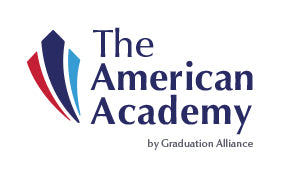Avoiding Plagiarism: Maintaining Intellectual and Academic Honesty
Posted on October 09 2012
One popular quote attributed to Sir Isaac Newton goes, “If I had seen further, it is by standing on the shoulders of giants.” And indeed, by learning from other people’s ideas and discoveries, we could formulate and develop our own thoughts, opinions and ideas. However, there are some who make the mistake of thinking they are the “giant”.
How? By taking another person’s writing and creative work and trying to get the credit for it. This is called plagiarism, which is a definite no-no in the academic world, even in virtual high schools. Plagiarism, simply defined, is taking another person’s work and trying to pass it as one’s own.
With today’s ready access to information via the Internet, it can be quite easy to google something up, copy, paste, reformat and your paper is ready to go. Well, think again. Plagiarism is cheating – it is stealing another person’s intellectual property. This does not just include writings and online articles, but also speeches, videos, photos, digital images, music and even ideas.
And as it is easy to copy and paste off of the Internet, it is similarly easy for online high schools to check whether a report or paper is truly yours or not. You may get a big red F for your plagiarizing efforts. Thus, while you are in an online high school program (and even throughout your professional career), it is important to respect the intellectual property of others and maintain academic honesty.
So how can you avoid plagiarism? Here are a few tips:
-
Be aware of what plagiarism is and is not. Plagiarism is getting another person’s work and claiming that it is yours. It is not:
- Quoting another person and mentioning that the quote is from the rightful owner
- Stating a well-known fact. If you say that the earth is round and it has been previously stated by someone else, you are not plagiarism because you are simply stating a well-known fact.
- Quoting what other people say to bolster your own opinions and ideas.
- Giving credit where credit is due. To avoid plagiarism, you must learn how to cite the works of others in anything you submit. When something is not common knowledge, be sure to mention your source. If you are stating another person’s opinion or idea, make sure that you cite him. There are various citation rules – be sure to apply these rules in your papers and projects. You will usually need to identify the author, the title of the book or work, the publisher, the date the work was published, and if it is a physical work (i.e. a book or a journal), the page/s of the text you will be quoting.
-
Understand copyright laws. It will be helpful to understand copyright laws that apply to you and your particular state. A copyright is set to prevent other people from unlawfully using and copying an original work. Generally, you are not allowed to copy or reproduce in any form or medium, as well as display a work or distribute the copies of the work for your personal benefit. Here are some common copyright terms:
- Public domain. A published work that has been copyrighted more than 75 years or so is already in the public domain. This means that the copyright has already expired and anyone is free to use this work. But be well-advised to provide citations to this work.
- Permission. Especially for educational purposes, you can ask permission by writing or calling the owner of the work, especially if you are using 2,500 words or more of another person’s work. In your request for permission, you should state the extent that you will be copying or using the work and how you will be using the work.
- Fair use. In some instances, especially for educational purposes, you can use a work without the need for asking permission. Fair use limits the exclusive rights of the copyright holder to the work. Although there are no hard and fast rules on fair use, it should be governed by the following guidelines:
- The percentage of the content being used
- The nature of the copyrighted work, whether it has been published or not
- The purpose and character of the use
- How the use of the copyrighted material will affect the potential value of the copyrighted work
- Obtain the copyright owner’s permission, when warranted. When you are using someone else’s copyrighted work, you can also write or call to ask permission from the copyright owner (not necessarily the author).
- List down and organize your resources. To help you make the proper citations in your paper, be sure to organize your resources so that you are not tempted to forget about citations because you can’t find the information.
- Give a second (and even third, look) at your work. This is to check whether all the text that needs citation is properly cited.





